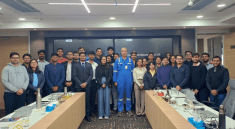Within the world of Generative Artificial Intelligence, machines are empowered to imagine, write stories and poems, create drawings, compose music, mimic voices, solve problems, and invent new ideas. Thus, blurring the lines between science and art. But what exactly is Generative AI, and how does it create these amazing things? We’ll embark on a journey to demystify this impressive technology, exploring its inner workings, its creative prowess, and the real-world impact it’s having on industries.
Imagine Generative AI as a chef in a restaurant. Just like a chef learns the flavours of different ingredients, Generative AI learns the “flavours” of text, images, or other things it’s given. It reads and studies lots of books, articles, and pictures to understand how words, sentences, and pictures are put together. Then it will think about all the flavours it knows, and mix, and match these flavours to create a new unique recipe every time you ask for it. What’s amazing is that it can keep making new recipes repeatedly, each time coming up with something different.
Generative AI is revolutionizing the upstream oil and gas industry. For example, a popular oil and gas company can optimise drilling operations in its Permian Basin by analysing vast amounts of drilling data and combining it with real-time sensor data from drilling rigs to uncover hidden patterns and predict potential issues during drilling operations. At Cairn Oil & Gas, we are conducting an experimental approach to using Generative AI to extract information from Well Completion Reports (WCR).
While Generative AI has its promises, it also comes with its concerns and risks. One of the foremost concerns is the quality and bias present in the data used to train Generative AI. While others include a lack of trust in the recommendations returned by the system and why a particular response is given. Without being heavily guided by ethical guidelines, it could recommend unsafe operations and drilling in sensitive ecological areas, leading to environmental impact.
In conclusion, Generative AI holds significant promise for the upstream oil and gas industry, offering novel ways to improve exploration, safety, and risk management. However, industry stakeholders must remain vigilant about addressing data quality, ethical considerations, and interpretability issues. A balanced approach that harnesses the technology’s potential while mitigating its risks will be crucial in realizing its benefits.




